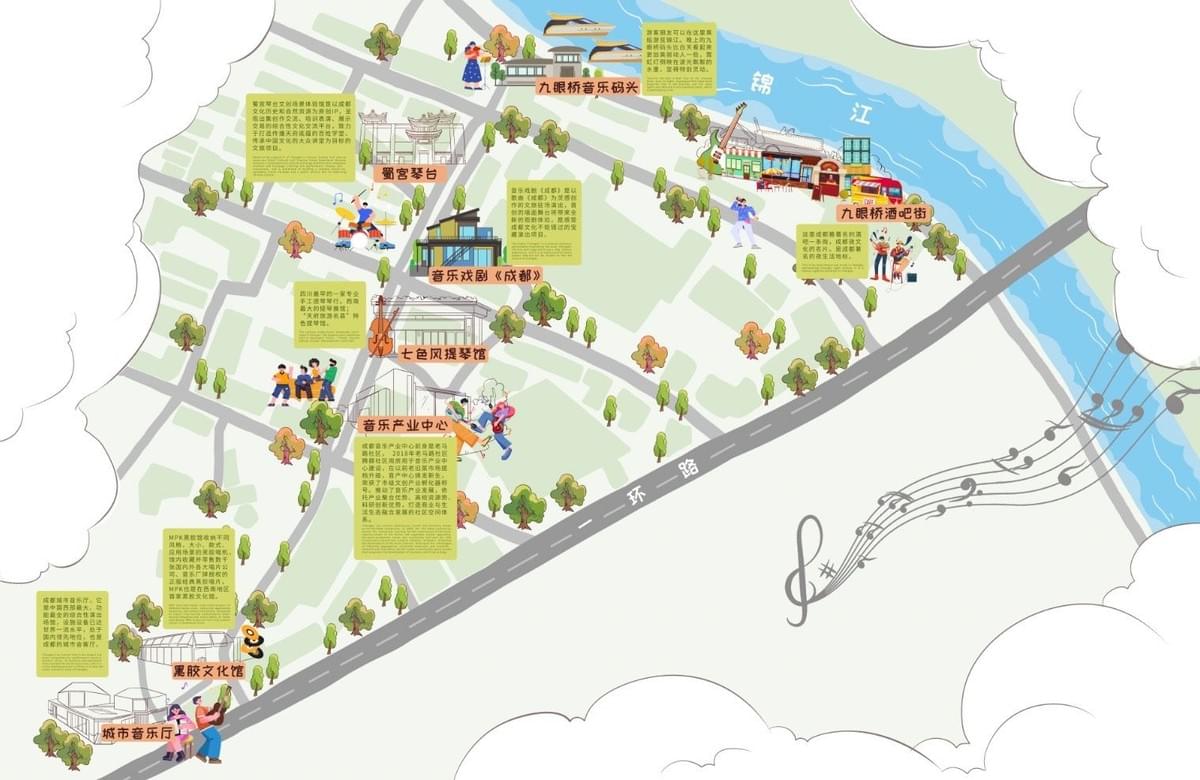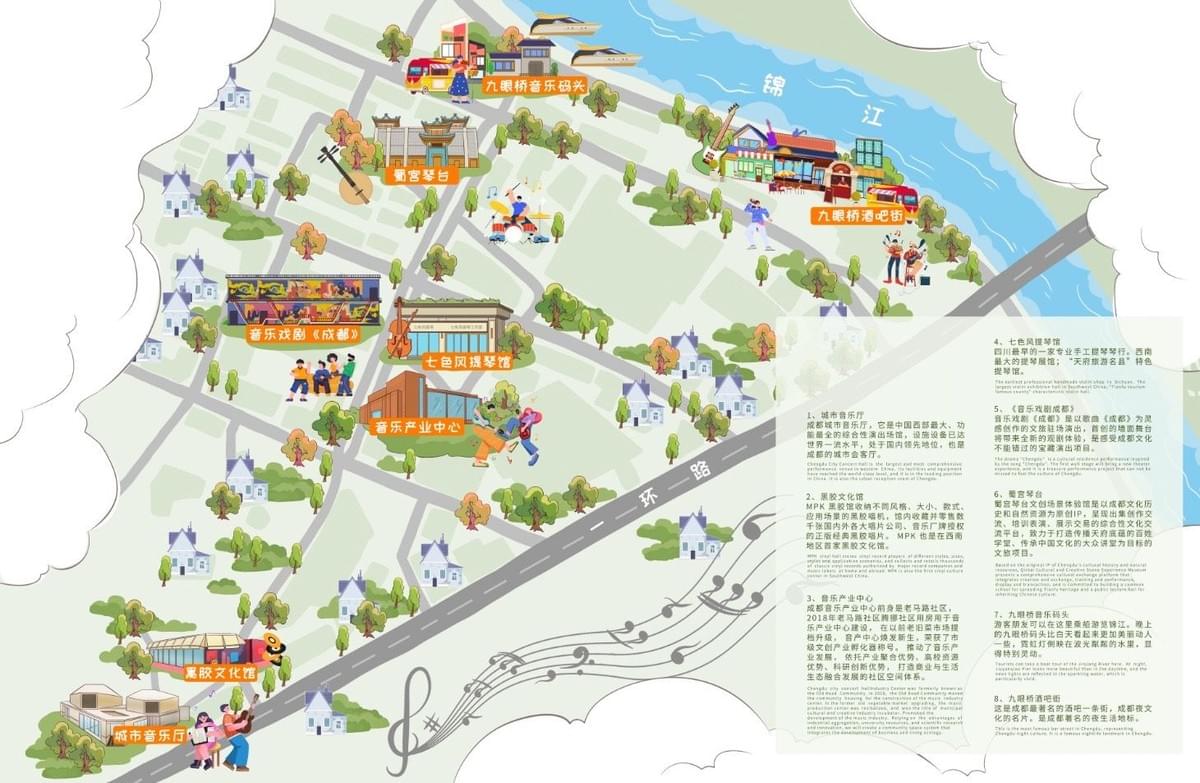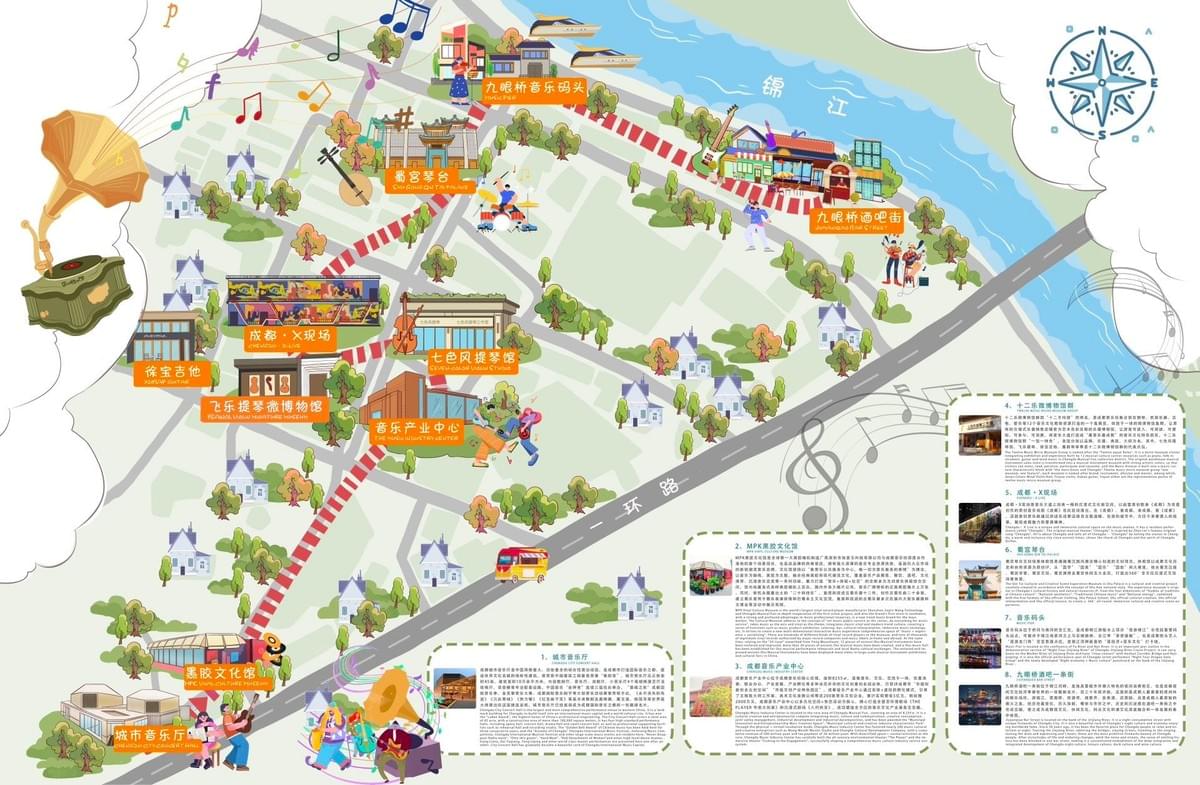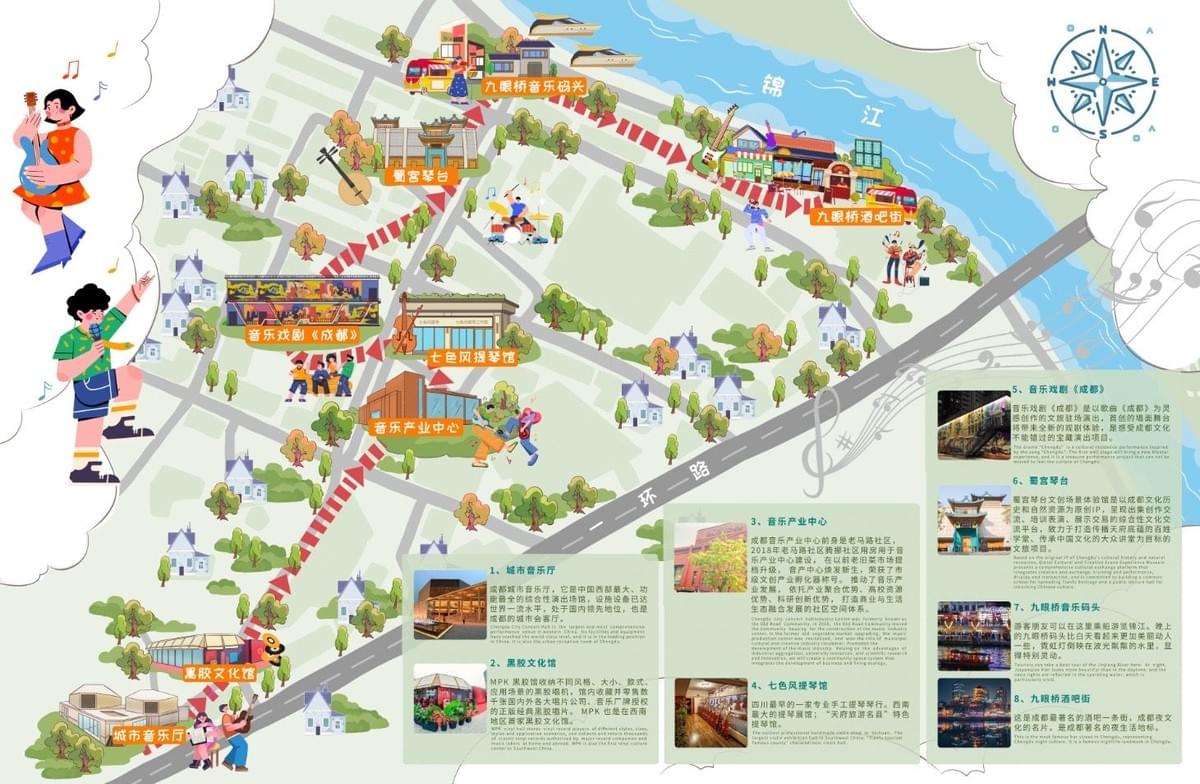Introduction
In the bustling metropolis of Chengdu, where ancient traditions harmonize with contemporary culture, a unique challenge emerged: how to guide music enthusiasts through the city's vibrant festival scene in a way that was both functional and visually captivating. The result? A stunning illustrated map that transforms traditional wayfinding into an artistic experience. This case study explores how Mapful.art created a guide that does more than direct—it tells a story, captures a cultural moment, and serves as a keepsake long after the final notes fade.
The Vision Behind the Map
When approached to create Chengdu's music festival guide, the Mapful.art team recognized that standard cartography wouldn't suffice. The client needed a solution that would showcase the city's musical landscape while honoring its cultural identity. The project requirements were clear: highlight key venues, create intuitive navigation paths, incorporate Chengdu's distinct character, and appeal to diverse audiences from locals to international visitors.
This wasn't just about plotting points on a grid—it was about capturing the essence of Chengdu's musical soul.
Design Elements That Strike the Right Chord
Distinctive Artistic Style
The map immediately captivates with its vibrant, playful aesthetic. The illustrators chose a color palette that resonates with the energy of live music while incorporating distinctly Chinese visual elements. Each stroke balances contemporary design sensibilities with traditional Chinese artistic influences, creating a visual language that speaks to both local and international festival-goers.
Navigation With Purpose
At the heart of the design is a bold red dotted path—a deliberate choice that echoes traditional Chinese seal stamps while providing clear directional guidance. This path connects venues in a logical sequence, turning what could be a confusing urban journey into an adventure with purpose.
Landmark Illustrations With Character
Each venue on the map receives special treatment through custom illustrations that capture its architectural essence. Rather than generic symbols, these buildings have personality—maintaining visual cohesion while allowing each location to stand out. The level of detail invites viewers to linger, discovering nuances with each glance.
Musical Storytelling
The illustrated musicians strategically placed along the map's edges do more than just decorate—they instantly communicate the map's purpose while adding dynamic energy to the composition. These characters serve as visual ambassadors for the festival, setting expectations for the experiences that await.
Balancing Information With Artistry
The true genius of this design lies in its information architecture. The right panel includes essential venue details, photographs, and descriptions without overwhelming the visual experience. This careful balance ensures the map functions as both a practical tool and an artistic keepsake.
While beautifully stylized, the map maintains geographic integrity, accurately representing the Jin River (锦江) and major roads. This geographic honesty ensures users can confidently navigate between locations while enjoying the artistic interpretation of their surroundings.
The Creation Process
Behind this seamless final product lies a methodical creative journey:
- Geographic Research: The team began with thorough research and likely site visits to understand the spatial relationships between venues and Chengdu's urban layout.
- Custom Illustration Development: Each landmark received dedicated attention, with illustrations carefully crafted to balance recognizability with artistic expression.
- Cultural Integration: Traditional Chinese aesthetic elements were thoughtfully incorporated while maintaining contemporary appeal—creating a design that feels authentically Chengdu.
- Information Hierarchy: Multiple design iterations refined the visual hierarchy, ensuring important venues stand out while secondary information remains accessible without creating visual clutter.
- Pathway Optimization: The festival route wasn't arbitrary—it was designed to create the most logical and enjoyable experience for attendees moving through the city.
Beyond Navigation: Creating a Keepsake
What elevates this map from useful to exceptional is its transformation from a temporary guide to a cherished souvenir. Festival attendees would likely preserve this map long after the events conclude—a testament to both the experiences it facilitated and its standalone artistic merit.
Conclusion
The Chengdu Music Festival map exemplifies what happens when cartography transcends mere function to become art. By thoughtfully balancing practical navigation needs with visual storytelling and cultural authenticity, Mapful.art created something that guides not just physical journeys but emotional ones as well.
This case study demonstrates the power of illustrated maps to transform how we experience events and cities. In an era of digital navigation, there remains something profoundly impactful about a beautifully crafted physical guide—one that doesn't just show you where to go, but makes you excited about the journey.
For event organizers, cities, and cultural institutions, the lesson is clear: when navigation becomes art, the path itself becomes part of the experience worth remembering.




